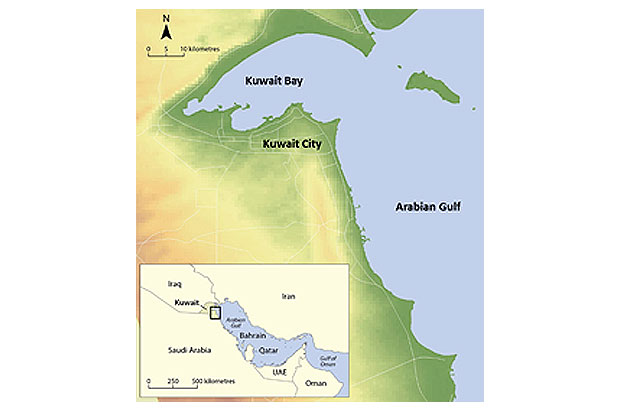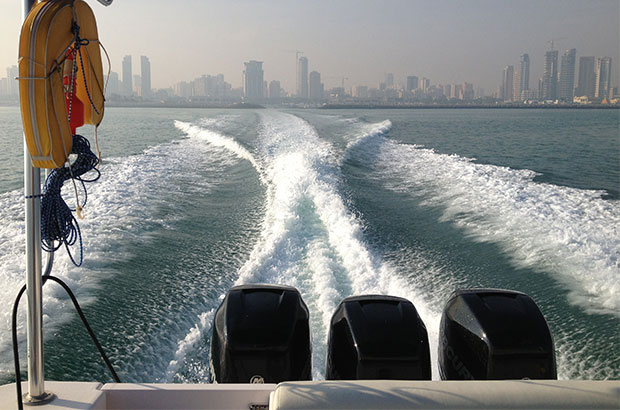Cefas, working in partnership with the Kuwait Environment Public Authority (KEPA), has just completed an extensive monitoring programme to assess the impact of sewage and industrial effluent discharged into Kuwait’s marine environment.
Based in and around Kuwait Bay, the integrated programme included field work, training packages and the analysis of 30 years of historic water quality data. The findings of this joint research programme have just been published in a special issue of Marine Pollution Bulletin ‘An Ecological Assessment of Kuwait’s Marine Environment’
Background

The State of Kuwait is situated at the north-western corner of the Arabian (Persian) Gulf. Its territorial waters are characterised by shallow seas, high summer water temperatures (>30oC) and elevated salinities (average 41‰).
A main feature of its marine environment is Kuwait Bay. This 750 km2 semi-enclosed shallow body of water provides vital habitats and nursery grounds for many fish, shrimp and other ecologically important organisms (eg elasmobranchs, marine mammals and sea birds).
The research outputs
The work undertaken during the joint Cefas and KEPA project included reviewing historic data to establish a baseline of marine pollution, and collecting new data on both the current levels of chemical contamination and sewage pollution in sediments from areas impacted by industrial and wastewater discharges. A review of historic water nutrient data clearly indicated that such discharges are adversely effecting water quality in the seas around Kuwait.
Aligned to this was the collection of data on the uptake and accumulation of chemical contaminants in teleost fish and sharks sampled from Kuwait Bay. Significantly, levels of metal contamination in the extremely rare smoothtooth blacktip shark (Carcharhinus leidon) were shown to exceed human food safety limits.

Kuwaiti waters are one of only two locations where the smoothtooth blacktip shark is known to occur. Therefore, such findings emphasize the need for further research and the implementation of appropriate management measures to help conserve this threatened species.
The biological effects of chemicals being released into Kuwait’s marine environment were investigated using both marine ecotoxicology bioassays and histopathological assessments of fish health. Several effluents discharging into Kuwait bay were shown to be toxic to marine species. We also detected contaminants with endocrine disrupting properties.
The impacts
The research presented in this special issue provides an important source of baseline information to guide management decision making within Kuwait. It will also help establish appropriate long term monitoring programmes.
The contributions from a number of different Kuwaiti management and research organisations, demonstrates the increasing focus on the status of the Kuwaiti marine environment. This provides hope that Kuwait, a country with a long cultural association with the sea, can balance the demands of a rapidly changing country with the steps required to maintain biodiversity and ecosystem status for the benefit of current and future generations.
For updates please sign up to email alerts from this blog, email me or you can follow us on Twitter @CefasGovUK.